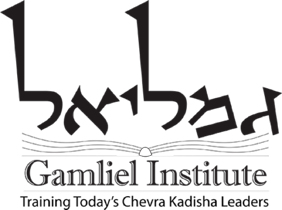originally at http://jama.ama-assn.org/issues/v280n7/ffull/jpo71280-1.html
The telephone rings shortly after dark. Sensing somehow that the call is for me, I answer the phone with only a moment’s hesitation. I cover the mouth of the receiver for a moment to confer with my, wife. She had few expectations for this night in the first place and gives only a brief sigh when I inform her I will be going out. With our children in bed, l know she will curl up with her journals and undoubtedly be asleep when I return.
“I’ll pick you up at 9,” my caller informs me, and we disconnect. Once again I ask myself how I ever became involved in this sort of a thing; but I accept my responsibility and await my ride. I spend the brief wait cleaning up the kitchen after dinner, a seemingly endless task, but one that is comforting in its lack of emotional or intellectual demands. My ride appears at the stroke of 9. I grab a jacket and am off.
The mood in the car is subdued, though not somber. My two companions and I engage in small talk, reviewing the status of our families, jobs, and vacation plans. We arrive at the funeral Home, its windows dark, and let ourselves in.
The chit-chat abruptly ends, and we set about our assigned tasks. We are members of our local Chevra Kadisha, literally the “Holy Society”, one of many such voluntary groups in Jewish communities around the world. The Chevra’s sole purpose is to perform ritual preparation of the deceased prior to a traditional Jewish burial ceremony. We serve any member of the community when requested by the family, regardless of affiliation or circumstances of death.
Both men and women participate in the: Chevra, with male members preparing men for burial and female members preparing women. Tonight we have been asked to prepare this recently deceased man prior to his funeral the next morning. Jewish tradition dictates that burial take place as soon as possible after death – generally the next day -hence the short notice we received. The preparation is guided by the fundamental premise in traditional Judaism that the deceased should be treated with utmost respect at all times. Based on this, we are not to discuss mundane or extraneous matters white performing duties, and perform them quietly and steadily. This respectful approach is second nature to me now, though l am disturbed to recall that l did not adopt this attitude in my medical training, but only once I joined the Chevra Kadisha.
The process of preparing the deceased varies somewhat from community to community, but the basic format is well-established by long tradition. First, we perform a ritual hand washing, followed by a brief prayer. We then wash the deceased. We perform this sponge bath with as much care as bathing any incapacitated person, perhaps even more gently because the deceased cannot assist. I cradle the head when the deceased is turned on his side, while my partner washes the back. Abrupt, jarring movements are carefully avoided. We maintain the modesty of the deceased at all times with a towel covering the genitalia. As we begin to wash the deceased, I cannot help but silently consider the cause of death. Are there any telltale scars suggesting a prior coronary artery bypass graft? Cachexia to indicate a malignancy? Defibrillator paddle burns to indicate a failed attempt at resuscitation? My silent visual autopsy is quickly concluded, however, with my speculations unanswered. I mentally chide myself for allowing the distraction and restore my focus to the sanctity of the task at hand. While we wash the deceased, however, my restless mind draws comparisons to my experiences in my medical student anatomy lab. Although we were instructed to “respect the dead” by our professors, we instead engaged in morbid humor and kept our emotional distance. While some of our behavior may have represented emotional immaturity, it seems that the, medical subculture did not reinforce our instructors’ weak admonitions.
Trying harder to keep my mind from wandering, I concentrate on my responsibilities focusing on the mechanical task of cleaning under the fingernails and toenails after the sponge bath has concluded. Having completed the washing, we lower the deceased into a Mikveh, a bath for ritual purification. Finally after we have carefully dried the deceased, we dress him in a traditional plain white linen shroud, place him in the casket, then wrap a prayer shawl around him. Traditionally there is no viewing. Before we close the casket, I pause for a moment, consider the deceased and wonder, Who was this man? Did he live a full life? Who mourns him? Is he at peace?
Our task complete, we ask for forgiveness from the soul of the deceased for we know that despite our best efforts, we have not remained entirely pure of thought and deed during the hour we have spent in the process of preparation. We leave the deceased in the company of another member of our community, the Shomer, (literally, “the watcher”), who will remain overnight to recite psalms while maintaining the traditional vigil until the burial.
The ride home is brief, but a spirit of satisfaction mingled with relief fills the car. The conversation is lighter, more animated, as we return to our families and our lives. We will never have direct contact with the family of the deceased, but rather have the inner satisfaction of know we have served our community and given the dead the respect they deserved.
The contrast between the attitudes toward the dead that I have observed in my professional life is striking. While the emphasis on ‘”respect for the dead” present in traditional Judaism may be formally espoused by the medical profession, it seems our behavior as physicians often falls short of this ideal. My personal attitude toward the dead has evolved since my medical school experiences. As a resident I came to view the dead as an indictment, staring back at me with, sightless eyes, reminding me of my failure to preserve life. This was a difficult time to deal with the dead, with my usual response a rapid departure from the vicinity of the dead to the more comfortable company of my living patients. I rationalized this retreat from my deceased patients, reasoning that I had no more to offer after the act of dying was completed. It never occurred to me to spend a few moments with my dead patient in silent, respectful contemplation.
More recently I have been working on a stroke rehabilitation unit trying to restore function rather than fight death directly. Here, death is a rare visitor, and not a major part of my professional experience. My primary interaction with the dead is no longer at work but in my religious communal life, and this has afforded me an opportunity to gain a new perspective. In the Chevra, the process of dying is past, and my involvement is confined to dealing with the body of the deceased. Without the emotional investment of having been responsible for this person’s life, I can finally view this as its final stage. My responsibility here is to provide the dignified treatment that we all would wish for. Despite my uncertainty about the meaning of life, and my fluctuating confidence in an afterlife, I know that I am doing a true “Mitzvah,” a good deed that exists for its own sake, and not for reward. Providing this dignified treatment to our patients who have died seems to be a “Mitzvah” we could all perform a bit better.
Joel Stein, MD Boston, Mass
The author would like to acknowledge Rabbi Heir Sender for his thoughtful review of the manuscript
Edited by Roxanne K. Young, Associate Editor.
AMA, August 19,1998-Vol 280, No. 7

